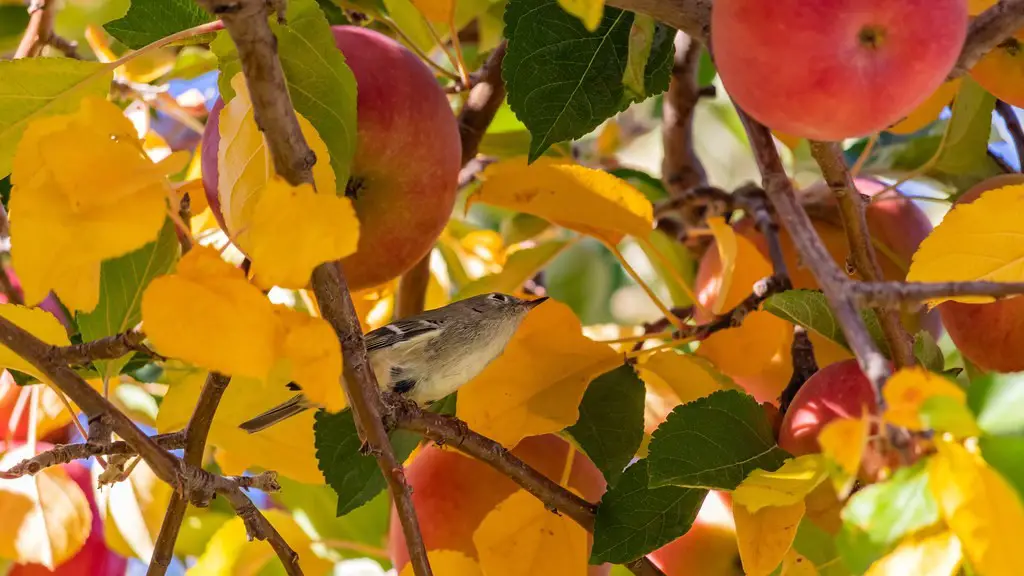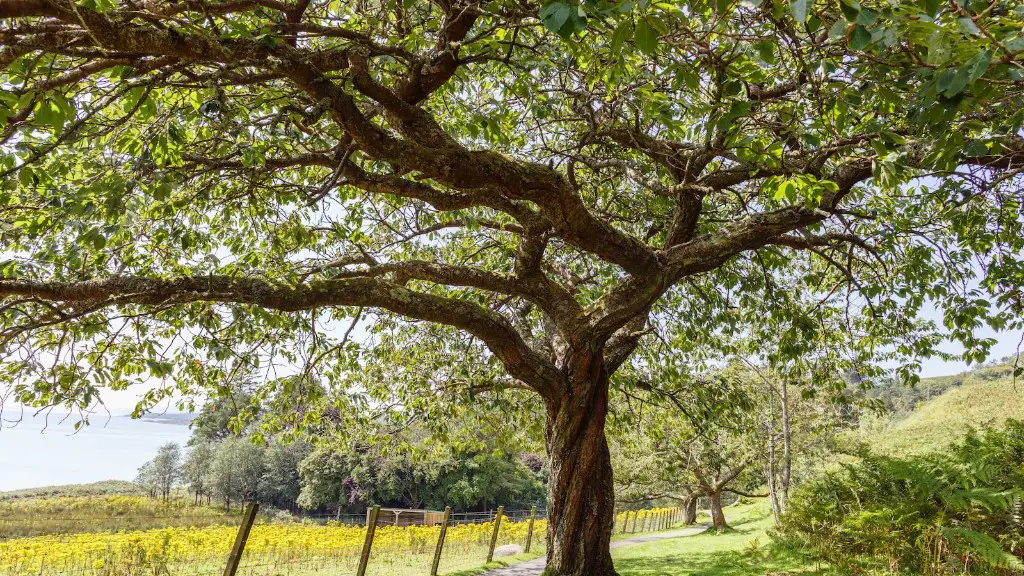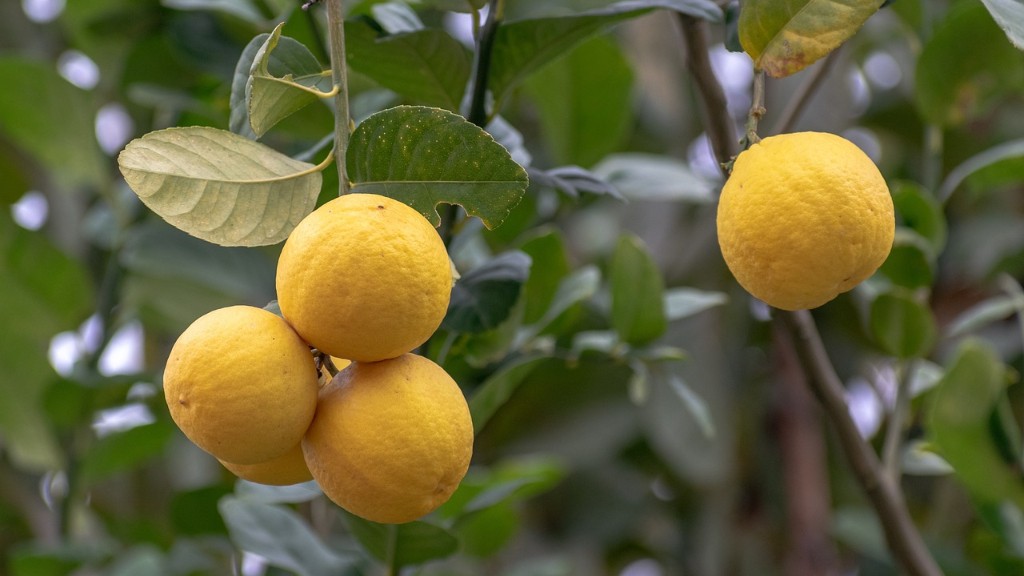Have you noticed that your apple trees are splitting at the base? If so, you are not alone! Many orchard owners, even seasoned pros, face this issue each growing season. Before we dive into the cause, it helps to understand the anatomy of an apple tree. By doing so, you can better diagnose and treat a splitting Apple tree.
An apple tree consists of a central stem with lateral branches that sit atop a wider base called a trunk. The trunk is the link between the soil and the rest of the tree. If you find that your apple tree is splitting near the base, it can be attributed to a few different factors. Here are just a few:
One potential culprit could be extreme temperatures. When temperatures take a sudden plunge, the plasticity of the tree trunk changes. This puts increased stress on the trunk, which can lead to the bark splitting apart. Cold weather can also cause shallow roots, as the tree is trying to conserve energy.
High winds can also lead to splitting. The force of the wind pushes against the sides of the trunk and can cause it to give way. Poor root development is also a factor, as strong root systems anchor the tree better and make it less susceptible to being blown down in strong winds.
In some cases, the cause of your apple tree splitting might be incorrect pruning. If the branches of an apple tree are pruned too severely, it leaves the trunk exposed and vulnerable to splitting. It’s important to prune in a way that maintains the natural shape of the tree, to avoid any unwanted stresses on the trunk.
Lastly, too much or too little water can also contribute to an apple tree splitting near the base. If your tree is too wet, the root system will become waterlogged, causing the tree to become unstable. On the other hand, if the tree is too dry, the bark may start to split, as there is not enough water to keep it pliable and robust.
Root Problems
When examining why your apple tree is splitting, it’s important to pay special attention to the tree’s root systems. Roots require oxygen and moisture in order to supply the tree with the nutrients it needs. If the soil is too wet, oxygen will not reach the roots, causing them to rot. Likewise, if the soil is too dry, the roots will not be able to access the necessary nutrients for growth and health.
Improper fertilisation can also come into play when considering root problems. If fertiliser is applied too often and in too large of a quantity, it can disrupt the balance of oxygen and moisture in the soil. This can damage the roots and the tree’s overall health.
If the root system of your apple tree is damaged, you may find that it is splitting near the base. It is essential to maintain the health of your tree roots in order to ensure that the apple tree remains stable and healthy.
The best way to prevent splitting is to check the roots of your apple tree regularly. Be sure to inspect the soil around the base of the tree, as well as any exposed roots. If the soil appears to be wet, reduce the amount of water you are giving to the tree. If the soil appears to be dry, give it a good watering. In either case, adding a thin layer of mulch will help retain moisture in the soil and protect the roots from temperatures and winds.
Fertiliser Use
Fertiliser play an important role in maintaining the health of your apple tree. Most apple trees mature within three to five years, so fertiliser should only be applied a few times a season. The type of fertiliser you use should be determined by the age and health of your apple tree, as well as its nutrient needs. Most apple trees require nitrogen, phosphorus and potassium.
To determine if your apple tree needs fertiliser, you can take a soil sample and send it off to be tested. This will determine the current nutrient levels and the type of fertiliser that is best suited. Be sure to read the instructions on the back of the fertiliser to ensure correct and safe application.
If your apple tree is splitting,It’s possible that too much, or poorly applied, fertiliser could be to blame. Hence, proper application and dosage of fertiliser is essential in order to enhance the health and stability of your apple tree.
Trunk Maintenance
In order to maintain a healthy, stable trunk for your apple tree, it is important to provide it with proper ventilation. If the trunk is tightly encased with foliage and soil buildup, it can harm the normal function of your apple tree. Prune your tree periodically to ensure that the trunk and roots have unrestricted air flow.
Also, during the winter months, it’s important to provide extra protection for your apple tree’s trunk. Using a tree wrap, such as burlap or plastic sheeting, to insulate the trunk base can protect it from extreme weather. This can prevent splitting and ensure that your apple tree is healthy and stable.
It is also recommended to mulch the base of your apple tree to keep it insulated and aid in moisture retention. Applying a thin layer of mulch around your tree’s trunk base also helps to keep weeds and diseases away from your tree.
Bad Practices
Sometimes, splitting can be a result of improper handling of an apple tree. Pulling on branches can put an immense amount of tension on the trunk, potentially resulting in it splitting from the base. This can be a difficult problem to fix, so it is important to handle your tree with care and caution.
In some cases, over fertilisation can lead to excessive growth of the apple tree’s trunk and branches. Not only can this make it difficult to maintain the tree, it can also cause the trunk to split due to the increased weight of the foliage. To avoid this problem, only apply the recommended dose of fertiliser.
Incorrect pruning is another common issue when it comes to splitting trees. Pruning should be done only when needed, and the natural shape of the tree should be maintained. Pruning too much or too often can leave the trunk exposed and cause it to crack.
Other Factors
Aside from the few mentioned above, there are a few other factors that can contribute to an apple tree splitting near the base. For instance, burrowing animals such as voles and gophers may burrow underneath the tree, weaken the roots and cause it to collapse. This could easily lead to the trunk splitting from the base.
Diseases and pests can also affect the stability of a tree. Apple tree splitting can be the result of an infestation that has gone untreated for a prolonged period of time. Regularly inspect your tree for signs of pests or diseases and take prompt corrective measures if necessary.
Fungal infections such as apple scab can weaken the roots, making the tree unstable and susceptible to splitting. Be sure to monitor your tree for signs of fungal infection and determine the best course of action to treating the problem.
It is always important to remember that prevention is better than cure. By following the best practices and keeping an eye out for any potential problems, you can help ensure that your apple tree stays healthy and free from splitting near the base.





